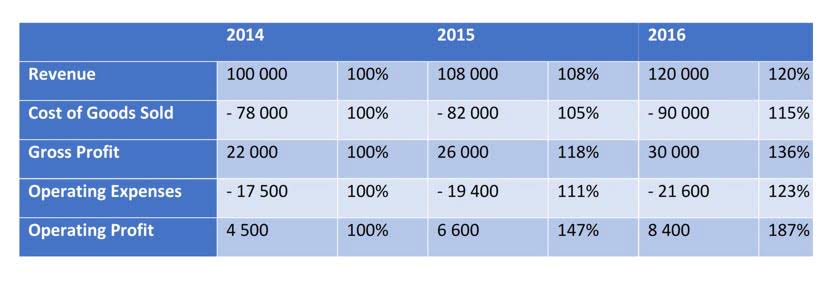Content

Additionally, in companies with multiple subsidiaries, a post-closing trial balance may have all of the closing entries reflected, but consolidation entries may not be. This makes a description of the type of trial balance that is being prepared even more crucial to a trial balance user. Preparing the post closing trial balanceis one of the last steps in theaccounting cycle. It’s basically a summary of the general ledger at the end of an accounting period after the closing entries have been made and the financial statements have been prepared. The purpose of this trial balance is to make sure that no more temporary account balances exist before the books are rolled forward into the next year. The difference between the unadjusted trial balance and the adjusted trial balance is the adjusting entries that are required to align the company accounts for the matching principle.
ACCOUNTING CYCLE
1 Identifying and Analyzing Business Transactions
2 Recording in the Journal
3 Posting in the Ledger
4 Unadjusted Trial Balance
5 Adjusting Entries
6 Adjusted Trial Balance
7 Financial Statements
8 Closing Entries
9 Post Closing Trial Balance
10 Reversing Entries— Kim 🧣 (@krmallari) November 8, 2017
Thus, the impact of such entries would be nil on your books of accounts. This is because an increase in one account is offset by a decrease in the other. Companies are required to close their books at the end of each fiscal year so that they can prepare their annual financial statements and tax returns.
Financial Accounting
Income statement items are temporary accounts and are not included in the post-closing trial balance. Check out this article talking about the seminars on the accounting cycle and this public pre-closing trial balance presented by the Philippines Department of Health. The next day, January 1, 2019, you get ready for work, but before you go to the office, you decide to review your financials for 2019. What are your total expenses for rent, electricity, cable and internet, gas, and food for the current year? You have also not incurred any expenses yet for rent, electricity, cable, internet, gas or food. This means that the current balance of these accounts is zero, because they were closed on December 31, 2018, to complete the annual accounting period. Today’s accounting software will likely generate a post-closing trial balance or any other trial balance with the click of a mouse.

In summary, the accountant resets the temporary accounts to zero by transferring the balances to permanent accounts. The last step in the process is preparing the post-closing trial balance. The big difference between this and the other trial balances is that the balance in the revenue and expense accounts should be zero. List all of the accounts and their balances in the appropriate debit or credit columns. Then add up both columns; if both columns have the same amount, the accounts balance.
The Entries For Closing A Revenue Account In A Perpetual Inventory System
You may have placed a debit in a credit column or vice versa, or you didn’t include one or more transactions in the report. If your debits and credits don’t match, perform your due diligence to find out why.

The cycle is repeated with the preparation of journal entries as the first step in the next accounting period. A trial balance is a bookkeeping worksheet in which the balance of all ledgers is compiled into debit and credit account column totals that are equal.
Accounting Principles I
Its purpose is to test the equality between debits and credits after closing entries are prepared and posted. The post-closing trial balance contains real accounts only since all nominal accounts have already been closed at this stage. At closing day of fiscal year, the business transfers temporary account balances to the permanent owner’s equity account or capital account. Closing entries formally recognize in the ledger the transfer of net profit and owner’s drawings to owner’s equity account. Important to note here that the temporary accounts or nominal account, or , which are closed at the end year are not exposed on the post-closing trial balance. To know how much your revenue and expenses were for a specific period, you need to start the period with a zero balance in your revenue and expense accounts.
The primary purpose of preparing this post-closing trial balance is to ensure that all accounts are balanced and ready for recording the next period of financial transactions. It is important to note that the post-closing trial balance contains only balance items accounts.
Types Of Trial Balance
There has been an error in journalizing the closing entries in the preceding step of the accounting cycle. If the balance in Income Summary before closing is a debit balance, you will credit Income Summary and debit Retained Earnings in the closing entry. In this chapter, we complete the final steps of the accounting cycle, the closing process. This is an optional step in the accounting cycle that you will learn about in future courses. Steps 1 through 4 were covered in Analyzing and Recording Transactions and Steps 5 through 7 were covered in The Adjustment Process.
- The first part is the date of declaration, which creates the obligation or liability to pay the dividend.
- To get the expense correct in the general ledger, an adjusting entry is made at the end of the month A for half of the interest expense.
- A post-closing trial balance is a list of balances of ledger accounts prepared after closing entries have been passed and posted to the ledger accounts.
- When a new accounting period opens, these accounts are used again and will accrue balances until the accounting period comes to an end.
- A post-closing trial balance is a trial balance which is prepared after all of the temporary accounts in the general ledger have been closed.
- All the temporary accounts like revenue and expense accounts have been closed out into the retained earnings account via the income summary account .
The totals for debits and credits should always be equal to each other. Notice that the post-closing trial balance lists only permanent or balance sheet accounts. The balances of all temporary accounts have become zero as a result of closing entries. The temporary accounts have therefore not been listed in post-closing trial balance. A post-closing trial balance is the final trial balance prepared before the new accounting period begins. Used to make sure that beginning balances are correct, the post-closing trial balance is also used to ensure that debits and credits remain in balance after closing entries have been completed.
Depreciation Expense Account Vs Allowance For A Depreciation Account
That way, you are prepared to enter accurate information into the financial statements. Closing entries reduce the income account to zero and transfer the balance to the income summary account. Each income account listed in the income summary balance contributes to total revenue for the period. When income post closing trial balance is recognized on the income statement, the total credit balance of all adjusted trial balance entries is reduced. When the post-closing trial balance is prepared, the income accounts are not listed because they all equal zero. This process closes out the revenue, expense, drawing or dividend accounts.
- At this point, the accounting cycle is complete, and the company can begin a new cycle in the next period.
- Reversing entries reverse an adjusting entry made in a prior period at the start of a new period.
- Initially, the accountant prepares a trial balance without adjusting entries, then subtracts or adds adjusting entry totals and creates an adjusted trial balance.
- This means that there is no error while posting the closing entries to their individual accounts and then listing those account balances on the post-closing trial balance.
Also, the balances pertaining to assets and expenses are represented in the debit column. Whereas the balances related to liabilities, income, and equity are shown in the credit column. A simple difference between adjusted and unadjusted trial balance is the amounts in the adjusting entries. A Post-closing Trial Balance lists all the balance sheet accounts that have a non-zero balance at the end of a reporting period. Hence, Companies use this tool to ensure that all debit balances are equal to the total of all credit balances after an accountant passes closing entries. The post-closing trial balance report lists down all the individual accounts after accounting for the closing entries. At this point in the accounting cycle, all the temporary accounts have been closed and zeroed out to permanent accounts.
The preparation of post-closing trial balance is the last step of the accounting cycle and its purpose is to be sure that sum of debits equal the sum of credits before the start of new accounting period. It provides the openings balances for the ledger accounts of the new accounting period.
FirstFT: Omicron accounts for nearly three-quarters of US Covid cases – Financial Times
FirstFT: Omicron accounts for nearly three-quarters of US Covid cases.
Posted: Tue, 21 Dec 2021 11:09:57 GMT [source]
In a double entry accounting system, accounts are entered in either a debit or credit column. Accounts are debited to show an increase in an asset, expenses and receivables. Accounts are credited to show an increase in revenue or liabilities. Your debit amounts always have to equal your credit amounts, which is one of the reasons to prepare a post-closing — or after-closing — trial balance. Accounting software requires that all journal entries balance before it allows them to be posted to the general ledger, so it is essentially impossible to have an unbalanced trial balance. Thus, the post-closing trial balance is only useful if the accountant is manually preparing accounting information. For this reason, most procedures for closing the books do not include a step for printing and reviewing the post-closing trial balance.
Let’s explore each entry in more detail using Printing Plus’s information from Analyzing and Recording Transactions and The Adjustment Process as our example. The Printing Plus adjusted trial balance for January 31, 2019, is presented inFigure 5.4. It is the end of the year, December 31, 2018, and you are reviewing your financials for the entire year. You see that you earned $120,000 this year in revenue and had expenses for rent, electricity, cable, internet, gas, and food that totaled $70,000. There can be several reasons why your debits and credits don’t match.
Is capital included in post closing trial balance?
The balances of the nominal accounts (income, expense, and withdrawal accounts) have been absorbed by the capital account – Mr. Gray, Capital. Hence, you will not see any nominal account in the post-closing trial balance. And just like any other trial balance, total debits and total credits should be equal.
The Post Closing Trial Balance is prepared after the completion of adjusting and closing process. All temporary accounts accounts begin the new accounting year with a zero balance. The purpose of the after-closing trial balance is to verify the equality of the permanent account balances carried forward into the next accounting period. Since all temporary accounts will have zero balances, the post-closing trial balance will comprise only balance sheet accounts . Another thing to observe is that as expected we do not see any temporary account balances in the post-closing trial balance. All the revenue and expense accounts have successfully been closed out into an income summary account and then the income summary account balance has also been transferred to retained earnings account. The retained earnings account is a new permanent account listed on this trial balance which you won’t find in the trial balances that preceded the post-closing trial balance.
After the closing entries are journalized and posted, only permanent, balance sheet accounts remain open. A post‐closing trial balance is prepared to check the clerical accuracy of the closing entries and to prove that the accounting equation is in balance before the next accounting period begins. The adjusted trial balance is what you’ll prepare after the unadjusted trial balance. It accounts for prepaid and depreciation expenses, what the company has paid for insurance and accumulated depreciation, among other line items. Just like with the unadjusted trial balance, the purpose of the adjusted trial balance is to see if the debits and credits are equal once you include all the adjusting entries. Post-closing trial balance – This is prepared after closing entries are made.
Its frustrating when u didnt balance the post-closing trial balance 😭😭😭😭😞
— ًkendra (@arivinyls) January 24, 2017


Leave a Reply